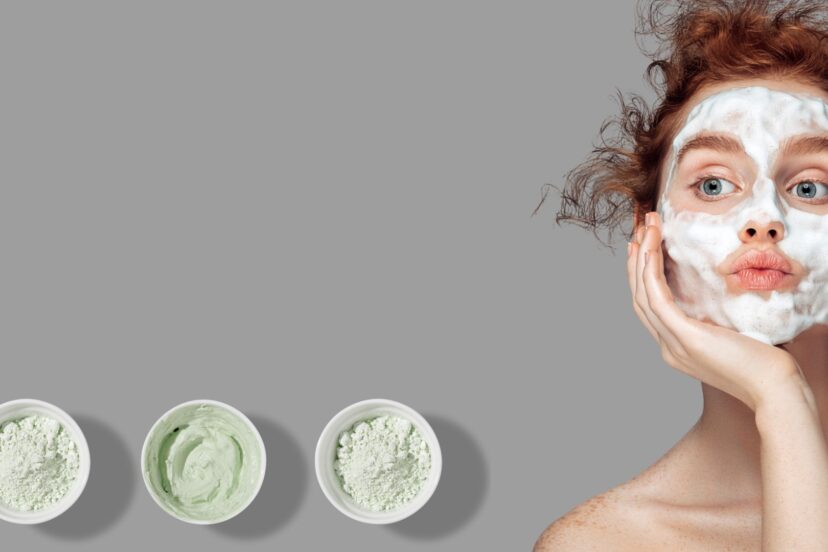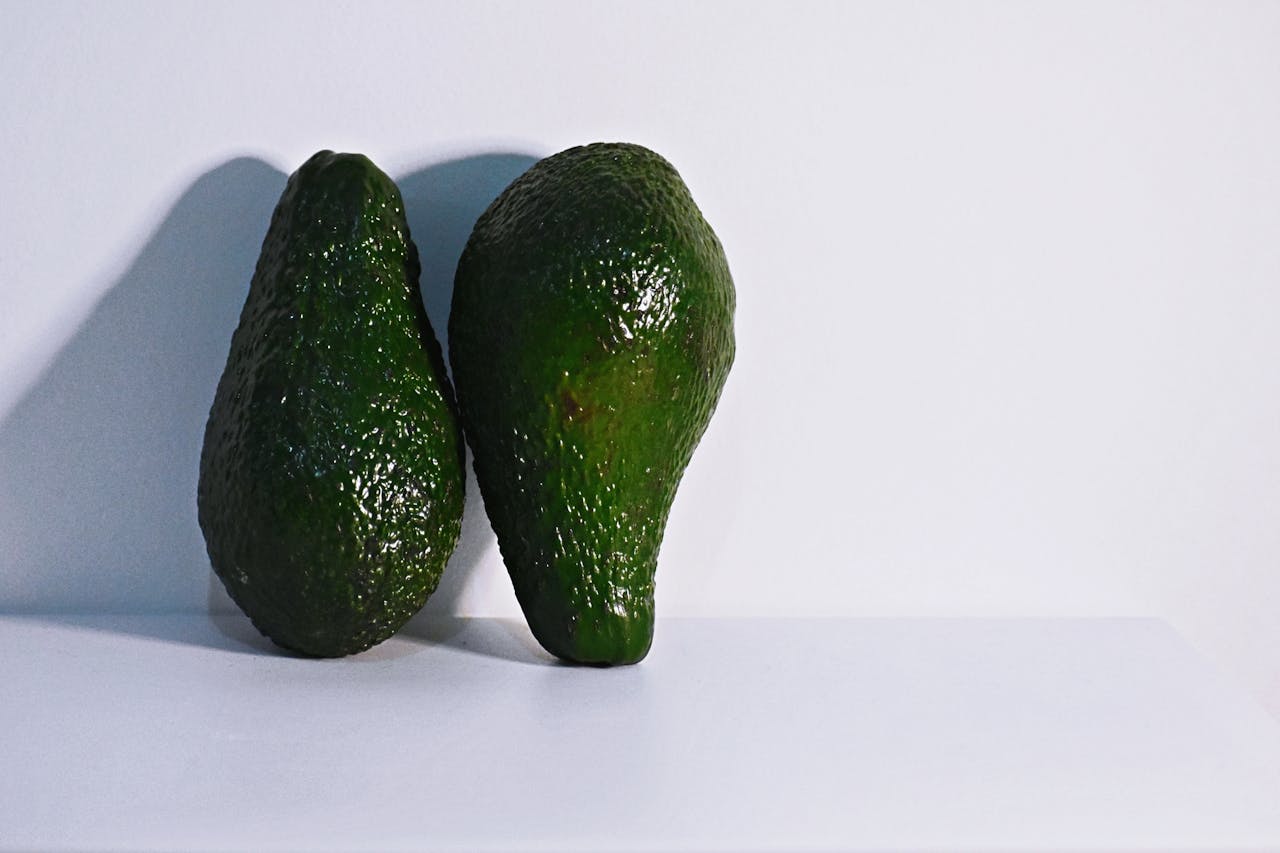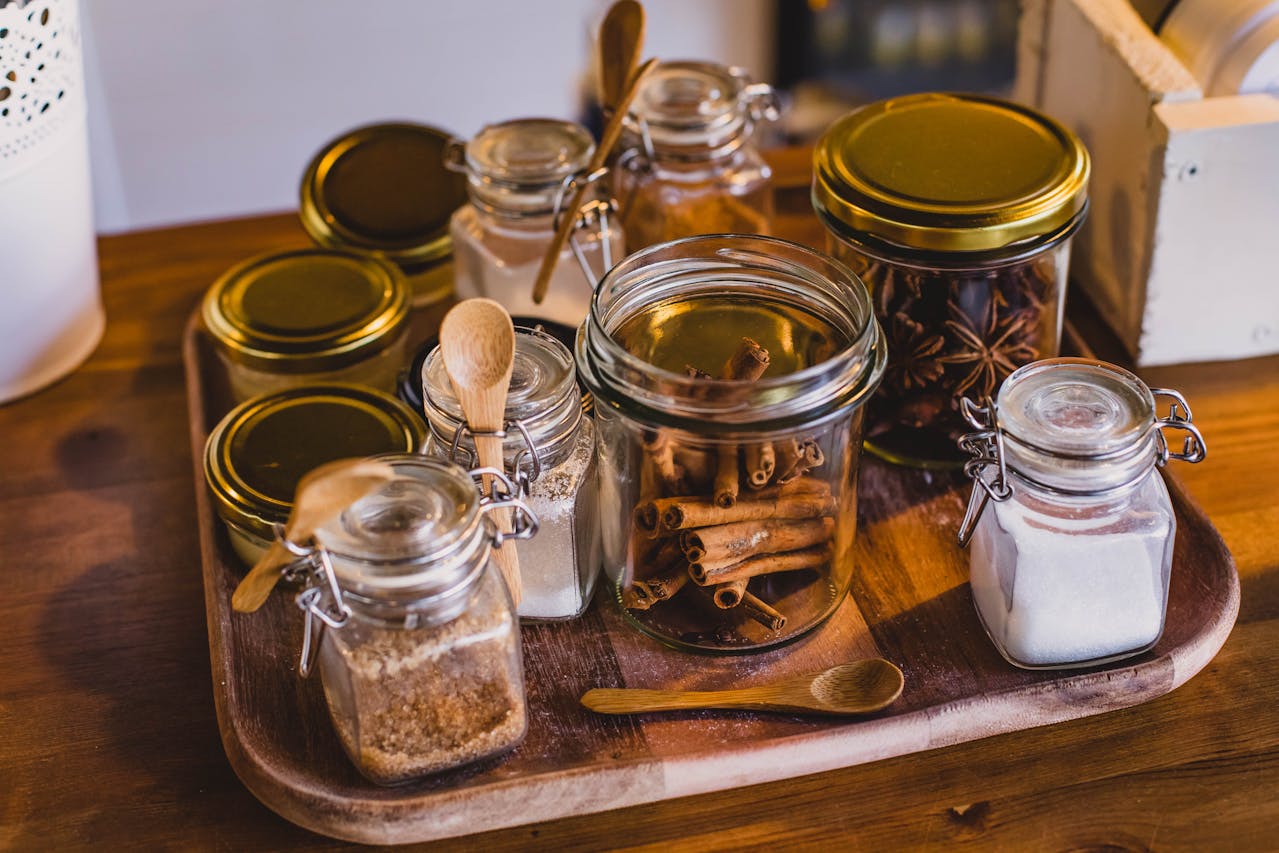Organic Beauty on a Budget: DIY Face Masks with Kitchen Staples
Did you know that you can achieve a spa-worthy glow without denting your wallet? Today, we’re all about Organic Beauty on a Budget.
Forget about those fancy store-bought products – You have the power to create your own skincare solutions right in your kitchen.
Ok, for those of you who are lazy or super busy for DIY…I have some recs for you too!
- Farmacy Honey Potion | Facial Mask with Ceramides & Panthenol
- Ogee Clay Mask | Glacial Clay Detox Mask for Face
- Argiletz Green Clay | Oily Skin | Made in France
- Avocado Sheet Mask | The Face Shop| Dry & Rough Skin | K Beauty
- Ultra Repair Instant Oatmeal Mask | First Aid Beauty
Mix and Mask: DIY Recipes for Every Skin Type
Here are some fantastic face mask recipes made with everyday kitchen staples, perfect for pampering your skin:
Normal Skin: Honey & Yogurt Delight
Ingredients:
- 1 tablespoon plain yogurt
- 1 teaspoon honey
Why it Works
Yogurt! You know that yogurt is packed with probiotics, right?…but what are probiotics? Basically, they’re the good guys of bacteria that do wonders for your skin!
These little guys help maintain a healthy balance of microorganisms living on your skin’s surface, which is called the microbiome. And a well-balanced microbiome is crucial because it helps protect your skin from harmful bacteria, reduces inflammation, and keeps your skin’s barrier function in check.
Honey is celebrated for its antibacterial properties largely stem from its unique composition. It contains hydrogen peroxide, a mild antiseptic produced when the enzyme glucose oxidase (added by bees) reacts with the sugars in honey. This reaction helps inhibit the growth of bacteria. Also, honey’s high sugar content contributes to its antibacterial effects by creating an environment where bacteria find it difficult to survive because no free water molecules are necessary for bacterial growth.
Beyond its antibacterial qualities, honey is also a natural humectant, meaning it attracts and retains moisture. Likewise, honey’s anti-inflammatory properties can help reduce redness and irritation, making it great for those of you with super sensitive or acne-prone skin. The antioxidants in honey also help protect the skin against damage from free radicals, the culprits of aging. Thus, a honey mask can help maintain youthful, radiant, and healthy skin.
Benefits
This mask helps maintain your skin’s natural radiance and balance.
Caution
If you have lactose intolerance, skip the yogurt and try a mask made with mashed banana instead.
How to Use
Mix the yogurt and honey in a bowl. Apply a thin layer to your face and leave it on for 15-20 minutes. Rinse with warm water and pat your face dry.
Dry Skin: Creamy Avocado & Oatmeal Magic
Ingredients
- ½ ripe avocado, mashed
- 1 tablespoon rolled oats, ground into flour
Why it Works
Avocados are a unique solution for dry skin with their rich natural oils and nutrients. Their deep moisturizing and nourishing properties make them an excellent choice for a face mask.
Let’s dig into the specific benefits of using avocado face masks for dry skin:
– Hydration: The high content of fatty acids in avocados helps to moisturize and soften skin cells. When applied as a face mask, avocado deeply hydrates the skin, making it feel supple and smooth.
– Vitamins and Antioxidants: Avocados are packed with vitamins A, D, and E, which are potent antioxidants; these vitamins will deliver your from the claws of oxidative stress caused by UV rays and pollution, which can lead to premature aging.
– Soothing Properties: Avocado has anti-inflammatory properties, thanks to ingredients like vitamin E, omega-3 fatty acids, and other antioxidants that help soothe dry, irritated skin. This can be particularly beneficial in reducing redness and inflammation.
– Skin Regeneration: The nutrients in avocados promote the regeneration of healthy skin cells. Vitamin E, in particular, aids in improving the skin’s elasticity, while omega-9 fatty acids help to repair damaged skin cells, improving the skin’s overall texture and appearance.
Oatmeal acts as a gentle exfoliant when applied to the face due to its slightly abrasive texture, which helps in several beneficial ways:
– Physical Exfoliation: The coarse texture of ground oatmeal gets rid of your dead skin cells from the skin’s surface. This physical exfoliation helps unclog pores and remove surface debris, promoting fresher skin.
– Soothing Properties: Oatmeal is known for its anti-inflammatory properties, making it ideal for sensitive skin. It soothes irritation and redness while exfoliating.
– Hydration: Oatmeal, with its unique composition of polysaccharides, forms a gel-like layer when mixed with water. This layer locks in moisture and gives you a good dose of hydration! This dual action is particularly beneficial for dry or sensitive skin types.
– Cleansing Action: Oatmeal contains saponins, a natural cleanser. These help to remove dirt and oil from the pores, making oatmeal a gentle cleansing agent that exfoliates without stripping the skin of its natural oils.
– Balancing pH: Oatmeal has a balancing effect on skin’s pH levels. Maintaining a balanced pH helps protect the skin from bacteria and pollutants, which can contribute to skin issues like acne. Oatmeal helps balance the skin’s pH levels due to its mild acidity, which aligns closely with the natural pH of human skin.
Benefits
This mask hydrates, nourishes, and gently buffs dry skin.
Caution
If you have very sensitive skin, skip the oatmeal and use just the mashed avocado.
How to Use
Combine the mashed avocado and ground oatmeal in a bowl. Apply the mask to your face and leave it on for 15-20 minutes. Rinse with lukewarm water and pat your face dry.
Oily Skin: Bye-Bye Shine with Clay & Apple Magic
Ingredients
- 1 tablespoon green clay (kaolin or bentonite)
- 1 tablespoon grated apple (peeled)
Why it Works
Green clay is a natural absorbent and has many benefits for oily skin:
– High Absorbency: Green clay, also known as French green clay or sea clay, has a high mineral content, including decomposed plant material and iron oxide, which give it its characteristic color. This clay is highly absorbent, meaning it can suck up all that extra oil and gunk from your skin. Hallelujah!
– Detoxifying Effects: Green clay has a strong ionic charge that helps it bind with and draw out toxins, dirt, and other substances that can clog pores. This detoxifying effect helps to clear the skin, reducing the appearance of pores and minimizing breakouts.
– Exfoliating Properties: The fine particles of green clay serve as a gentle exfoliant. When used in a mask, it helps to slough away dead skin cells, which can otherwise trap oil and lead to acne.
– Soothing Nature: Despite its powerful cleansing properties, green clay is gentle on the skin. No skin irritation and inflammation here! This is beneficial for “over-worked” acne-prone skin souls. You know, those of you familiar with the conundrum of oily, acne-prone skin but sensitive at the same time.
Apples are rich in malic acid. I’ll tell you everything you need to know about the benefits of this AHA in a video below.
Benefits
This mask helps control oil production and reduces the appearance of enlarged pores.
Caution
Patch test the clay on your inner arm before applying it to your face. If you experience any irritation, discontinue use.
How to Use
In a non-metal bowl, mix the green clay with the grated apple. Apply a thin layer to your face, avoiding the eye area. Leave it on for 10-15 minutes, or until the mask starts to dry. Rinse thoroughly with warm water and pat your face dry.
Want to know more about the wonders Malic Acid can do for your skin?
Acne-Prone Skin: Honey & Cinnamon Powerhouse
Ingredients
- 1 tablespoon honey
- 1/2 teaspoon ground cinnamon
Why it Works
Honey has natural antibacterial properties that help fight blemish-causing bacteria.
Cinnamon has anti-inflammatory properties that can alleviate your irritated skin: Why? Because it contains cinnamaldehyde. This particular compound is known for its ability to reduce inflammation and swelling.
Also, cinnamon boosts circulation, which can help reduce skin redness and promote a healthy, glowing complexion. Its natural antimicrobial and antioxidant properties also contribute to its ability to calm irritated skin, making it a popular choice in various skin care remedies.
Benefits
This mask helps combat breakouts and reduce inflammation associated with acne.
Caution
Cinnamon can be irritating to some skin types. Do a patch test on your inner arm before applying it to your face. If you experience any redness or burning, discontinue use.
How to Use
In a bowl, mix the honey and cinnamon together to form a paste. Apply a thin layer to your face, avoiding the eye area. Leave it on for 10-15 minutes. Rinse thoroughly with warm water and pat your face dry.
Sensitive Skin: Soothing Oatmeal & Honey Love
Ingredients
- 1 tablespoon rolled oats, ground into flour
- 1 tablespoon honey
Why it Works
As mentioned above, oatmeal is a gentle exfoliant and has anti-inflammatory properties that can soothe irritation. In case you were wondering, oat is soothing for the skin mainly due to avenanthramides (phenolic compounds found exclusively in oats).
Honey adds a touch of moisture and has antibacterial properties. See above!
Benefits
This mask calms and soothes sensitive skin without causing irritation.
Caution
If you have any allergies to oats or honey, skip this mask and opt for a different recipe. Some options in this case would be: Aloe Vera, Cucumber, Chamomile, Rice Water or Rose Water.
How to Use
Grind the rolled oats into a flour consistency. In a bowl, mix the oat flour with honey. Apply a thin layer to your face and leave it on for 15-20 minutes. Rinse with lukewarm water and pat your face dry.
Frequently Asked Questions (FAQ)
How often can I use these DIY face masks?
A good rule of thumb is using these masks 1-2 times weekly. Over-exfoliating can irritate your skin, so listen to your skin’s needs and adjust the frequency accordingly.
Do I need to steam my face before applying a mask?
Steaming can help open up your pores, allowing the mask ingredients to penetrate deeper. However, it’s not essential for these recipes. If you do choose to steam, keep it brief (no more than 5 minutes) and avoid extremely hot water which can damage your skin.
Can I store leftover mask mixture?
It’s best to use these masks fresh for maximum potency. However, if you have a little leftover, you can store it in an airtight container in the refrigerator for up to 2 days. Just be sure to warm it up slightly before using it again.
Now, you have an arsenal of DIY face masks at your fingertips, all made with ingredients you probably already have on hand! So go forth, pamper yourself, and enjoy your radiant, healthy skin!








